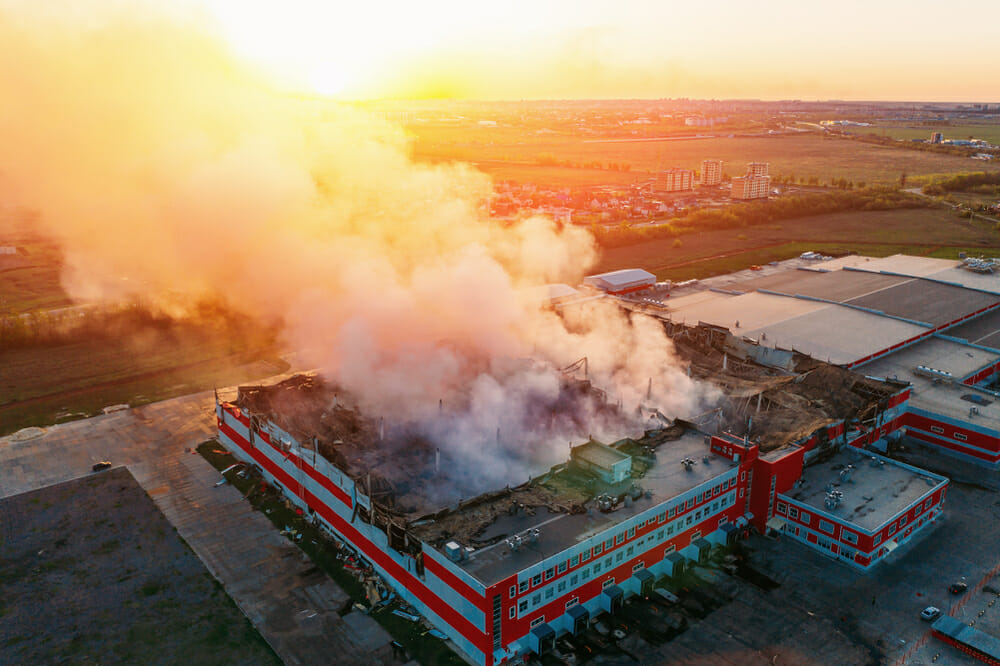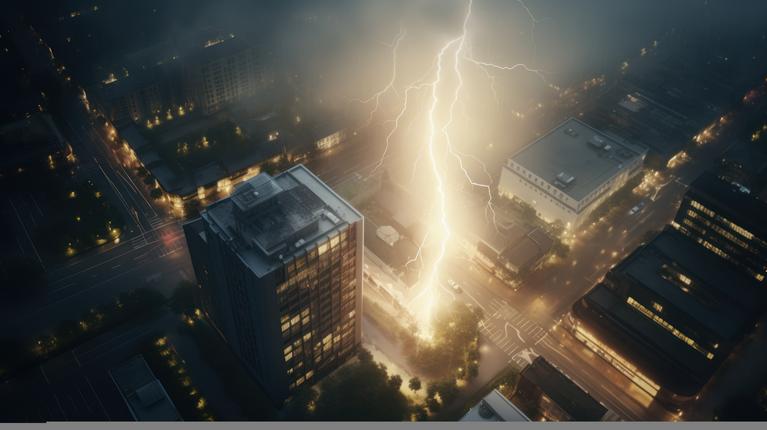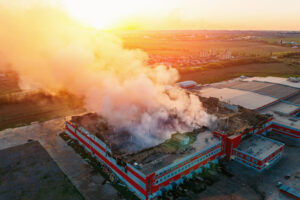Introduction
Understanding Building Damage, Importance of Timely Assessment
When you own commercial or multi-family property, experiencing damage from fire, hail, hurricanes, tornadoes, or floods can be overwhelming. Assessing building damage swiftly and accurately is crucial for two main reasons: it can prevent further deterioration and ensure a fair insurance settlement. This guide aims to demystify the process of assessing building damage for property owners dealing with the aftermath of such events.
First and foremost, recognizing the type of damage—be it structural or non-structural—is critical. Understanding the root cause, whether environmental, material defects, or ground movements, will guide your next steps towards restoration. Timely assessment is not just about identifying visible signs of damage but entails a deeper, professional evaluation to uncover hidden issues that could pose larger problems in the future.
Taking prompt action can significantly reduce the scope of damage and associated costs for repairs. Moreover, it bolsters your position in navigating insurance claims, ensuring that you receive the compensation you need to restore your property to its pre-damage condition.
The goal here is not just to fix what’s broken but to proactive guard against future incidents, ensuring your property remains safe, sound, and valuable. Join us as we break down everything you need to know about assessing, addressing, and preventing building damage.

Understanding Types of Building Damage
When we talk about building damage, it’s not just about a cracked wall or a leaking roof. There are several types of damage each building can face, and understanding these is crucial for timely and effective response.
Structural Damage
This is the big one. Structural damage refers to any damage that affects the core support system of the building. Think of it as the skeleton of your building getting hurt. This includes damage to:
- The foundation
- Load-bearing walls
- Beams and columns
- The roof
When these parts get damaged, the safety of the entire building is at risk. Signs to watch out for include cracks in the foundation, bowing walls, and sagging roof lines.
Non-Structural Damage
Non-structural damage doesn’t necessarily threaten the building’s immediate stability but can still cause headaches. This includes damage to:
- Windows
- Doors
- Interior walls
- Flooring
While it might not sound as serious, non-structural damage can lead to significant repair costs and can affect the building’s functionality and aesthetics.
Environmental Causes
Mother Nature can unleash her fury in many ways. Environmental causes of building damage include:
- Weather events like hurricanes, tornadoes, and floods
- Long-term exposure to harsh climates, leading to wear and tear
Buildings in different regions face different environmental challenges, so understanding the local climate is key to prevention.
Material Defects
Sometimes, the problem starts from the very materials used to build. Material defects can lead to:
- Weakening of the structure over time
- Increased susceptibility to environmental damage
Common material defects include poor-quality concrete, corroded metal, and rotting wood. These defects can be due to poor manufacturing or improper selection of materials for the specific environmental conditions.
Ground Movements
Lastly, the ground beneath the building can also be a source of trouble. Ground movements include:
- Soil settlement or subsidence
- Earthquakes
- Landslides
These movements can undermine the foundation’s stability, leading to significant structural damage.
Each type of damage requires a unique approach for assessment and repair. It’s crucial to regularly inspect your building for these signs of damage and seek professional help when needed. Early detection can save you from costly repairs in the future.
In our next section, we’ll delve into how to identify signs of structural damage, so you can catch any issues before they escalate.
Identifying Signs of Structural Damage
Identifying signs of structural damage early can save you a lot of hassle and money. Let’s break down the key indicators that your building might be suffering from structural damage: Cracked Concrete, Water Leaks, Foundation Issues, Damage in Interior & Exterior Walls, and Misshapen or Bowed Walls.
Cracked Concrete
Concrete is sturdy, but not invincible. Look for cracks on floors, walls, and ceilings. These can be hairline at first, but over time they may widen. This is a clear sign that something’s not right. Especially pay attention to cracks that are wider at one end, which indicates a possible structural shift.
Water Leaks
Water is a building’s silent enemy. It can cause mold, weaken structural integrity, and even lead to electrical hazards. Keep an eye out for wet spots, damp walls, or stains on ceilings. These could be signs of leaks that are not just a plumbing issue but could indicate deeper structural problems.
Foundation Issues
The foundation is the bedrock of your building. If you notice doors that won’t close properly, windows that stick, or gaps around door frames, it could be a sign of foundation shifting. Also, visible cracks on the exterior of your building’s foundation are a red flag.
Damage in Interior & Exterior Walls
Walls tell the story of a building’s health. Look for bulges or bowing in walls, cracks around window frames, or gaps where the walls and ceiling meet. These can indicate that the building’s structure is under stress.
Misshapen or Bowed Walls
Walls that appear misshapen or are bowing outward are a clear sign of structural damage. This could be due to a failure in the building’s load-bearing capabilities or foundational settling. Either way, it’s a serious issue that needs immediate attention.

Remember, catching these signs early and consulting with a professional can significantly reduce the risk of major structural failure. Regularly inspect your building, and if you spot any of these signs, it’s critical to act swiftly.
For a more in-depth understanding of how to assess structural damages in a building, referencing expert opinions and case studies can be invaluable – such as this discussion on Quora .
Now that we’ve covered how to identify signs of structural damage, let’s move on to understanding the causes behind these issues, so you can better prevent them in the future.
Causes of Building Damage
Understanding what leads to building damage is crucial for anyone looking to maintain a safe and sturdy structure. Essentially, building damage can stem from a variety of sources, but they mainly fall into three broad categories: Environmental Conditions, Material/Structural Defects, and Ground Movements. Let’s break these down in simple terms.
Environmental Conditions
The world around us is full of forces that can challenge the integrity of any structure. Climatic conditions such as extreme temperatures, heavy rainfall, or strong winds can gradually wear down a building. For instance, continuous exposure to high winds can stress the building’s outer shell, leading to cracks or even partial collapses.
Seismic activities, or earthquakes, pose another significant threat. The shaking ground can severely disrupt a building’s foundation, causing immediate and catastrophic damage. Even buildings designed to withstand such events can experience stress and damage over time.
Material/Structural Defects
Not all problems come from external forces. Sometimes, the issues lie within. Material defects, like using substandard concrete or steel, can significantly weaken a structure’s durability. For example, concrete that hasn’t been mixed or cured properly may develop honeycombs, reducing its strength .
Structural defects are often the result of inadequate design or construction errors. This can include underestimating the load a building must bear or improper installation of critical components. These mistakes can lead to a range of problems, from minor issues like leaks to major concerns such as total structural failure.
Ground Movements
Finally, the ground itself can be a source of building damage. Soil settlement happens when the ground under a building compresses under weight, potentially causing the structure to sink or tilt. Landslides and land subsidence can remove support from under a building, leading to catastrophic collapses. Such ground movements often occur without warning, making them particularly dangerous.
In areas with karst terrain, sinkholes can suddenly develop, swallowing parts of buildings or entire properties. Additionally, soil liquefaction during earthquakes can cause solid ground to behave like a liquid, significantly increasing the risk of building collapse.
Understanding these causes of building damage is the first step in preventing them. Whether it’s through regular maintenance checks, employing better construction techniques, or using higher quality materials, awareness can lead to actions that protect buildings and their occupants. As we move on to assessing and addressing building damage, keep these causes in mind to better understand how to mitigate risks and ensure the longevity of your structure.
Assessing and Addressing Building Damage
When you first notice signs of building damage, it might feel overwhelming. But, taking the right steps early can save you time and money. Here’s how to approach the process:
Visual Inspection
Start with a visual inspection. This means taking a careful look around your property. You’re checking for obvious signs like cracked concrete, water leaks, and misshapen walls. Sometimes, what seems minor could hint at bigger problems underneath.
Professional Assessment
After your initial check, it’s crucial to bring in a professional for a more thorough assessment. Experts, like those at McGill Restoration, have the tools and knowledge to spot things you might miss. They can determine the root cause of damage, whether it’s environmental, structural, or something else.
Foundation Repair
If your building has foundation issues, don’t wait. Foundation damage can lead to more severe structural problems over time. Professionals use various methods to fix foundations, ensuring your building stands strong.
Water Damage Restoration
Water damage is tricky. It’s not just about drying out the area. You need to address the cause of the water leak to prevent future issues. Restoration experts can help clean up the damage and suggest improvements to keep your building dry.
Concrete Repair
Concrete damage can vary from surface cracks to deep structural issues. Repair techniques depend on the damage extent. McGill Restoration, for instance, specializes in concrete repair, restoring the integrity and appearance of your building.
Heading Towards Recovery
Assessing and addressing building damage is a step-by-step process. Start with a visual inspection, but don’t stop there. Professional assessments can uncover hidden problems, leading to targeted repairs. Whether it’s fixing the foundation, addressing water damage, or repairing concrete, getting the right help is crucial.
The goal is not just to fix the current damage but to strengthen your building against future issues. With expert advice and skilled restoration, you can protect your property and ensure it remains safe and functional for years to come.
In the next section, we’ll explore how regular maintenance and smart planning can prevent future building damage, keeping your structure in top condition.
Preventing Future Building Damage
Preventing future building damage is all about being proactive rather than reactive. It’s much easier (and often cheaper) to take steps to prevent damage than it is to repair it once it’s occurred. Let’s dive into how regular maintenance, environmental protection, and smart planning can safeguard your building.
Regular Maintenance
- Roof Inspections: Have your roof inspected at least once a year. Catching and fixing small issues can prevent major leaks and water damage.
- Plumbing Checks: Regularly inspect pipes for leaks or corrosion. Early detection can prevent water damage and costly repairs.
- Foundation Checks: Look for cracks or signs of movement in the foundation. Early intervention can save you from structural damage down the line.
Environmental Protection
- Landscaping: Ensure trees and shrubs are planted at a safe distance from your building. Roots can grow into and damage the foundation or plumbing.
- Drainage: Proper drainage is crucial. Water should always be directed away from the building to prevent foundation issues.
- Weatherproofing: Seal windows and doors to protect against water intrusion. This can also improve energy efficiency and reduce costs.
Mine Planning and Design
For buildings near mining operations, understanding and planning around the environmental impact is crucial.
- Assess the Risk: Before construction, assess the potential risks of land subsidence or vibrations from mining operations.
- Collaborate with Mining Companies: Work with nearby operations to understand their plans and how they might affect your building.
Reclamation Plans
If you’re involved in or near mining operations, having a reclamation plan is essential.
- Soil Preservation: Strategies to preserve topsoil and prevent erosion can protect the structural integrity of buildings.
- Water Management: Proper management of surface and groundwater can prevent waterlogging and foundation damage.
Commercial Concrete Waterproofing Products
Water is one of the biggest threats to the structural integrity of buildings. Using commercial-grade waterproofing products can provide an additional layer of protection.
- Basement Waterproofing: Apply waterproofing coatings to prevent water intrusion.
- Sealants: Use sealants around windows, doors, and where utilities enter the building to prevent leaks.
Preventive maintenance and careful planning are key to protecting your building from damage. By addressing potential issues before they become problems, you can save time, money, and avoid the stress of dealing with significant repairs. Regular checks, environmental considerations, and the right products can go a long way in keeping your structure sound for years to come.
In the next section, we’ll explore how to navigate the complexities of insurance claims for building damage in Texas, ensuring you’re well-prepared in case of an unexpected event.
Navigating Insurance Claims for Building Damage in Texas
When facing building damage in Texas, dealing with insurance claims can feel like navigating through a maze. Here’s a straightforward guide to help you through the process, with a focus on Insurance Claim Recovery Support LLC.
Start with Immediate Action
– Report the Damage: As soon as you notice building damage, report it to your insurance company. Quick action is crucial.
– Document Everything: Take photos and videos of all the damage. This documentation is key for supporting your claim.
Understanding Texas-Specific Regulations
Texas has its own set of rules when it comes to insurance claims. It’s important to:
– Know the deadlines for filing a claim.
– Understand your rights under Texas law.
Insurance Claim Recovery Support LLC
This company stands out because of its deep understanding of Texas-specific regulations. They have a track record of helping Texans efficiently navigate the insurance claim process. Whether it’s damage from natural disasters or other causes, they know how to handle it.
Why Choose Insurance Claim Recovery Support LLC?
– Expertise in Texas Claims: They specialize in the Texas market, knowing the ins and outs of state-specific insurance laws.
– Professional Guidance: From documentation to negotiation, they guide you at every step, ensuring your claim is properly presented and argued.
– Success Stories: They have helped countless Texans secure fair settlements. Their experience in dealing with various types of building damage is unmatched.
Negotiation Is Key
Don’t settle for the first offer from your insurance company. Insurance Claim Recovery Support LLC can help you negotiate a fairer settlement based on the actual extent of your building damage.
Get Professional Help
Navigating insurance claims on your own can be overwhelming, especially in the aftermath of building damage. Insurance Claim Recovery Support LLC offers the expertise and support you need to ensure you receive the compensation you deserve.
Taking the Next Steps
If you’re dealing with building damage in Texas, getting professional help can make a huge difference. Insurance Claim Recovery Support LLC is ready to assist you in maximizing your claim and getting your property back to its best condition.
For more information on navigating insurance claims in Texas, check out this helpful guide.
In the following section, we will answer some frequently asked questions about building damage, providing you with even more insights to ensure you’re fully prepared.
Frequently Asked Questions about Building Damage
When it comes to building damage, it’s crucial to address concerns promptly and efficiently. Let’s dive into some of the most common questions we receive.
What is the difference between structural and non-structural damage?
Structural damage directly impacts the integrity and strength of a building. It’s about the parts that hold the building up, like foundations, beams, and walls. Think of it as the skeleton of your house or building. If there’s damage here, it could be serious, and the building might even be unsafe. Examples include large cracks in walls or foundations, sagging roofs, or floors.
Non-structural damage, on the other hand, doesn’t affect the overall stability or safety of the building but it sure can be a nuisance and costly to fix. This includes things like broken windows, minor wall cracks, or damaged doors. While it’s less about safety, it’s still important for the building’s functionality and appearance.
How can environmental conditions lead to building damage?
Environmental conditions play a big role in the health of a building. Here’s how:
- Weather: Extreme weather like hurricanes, floods, and hail can cause immediate and severe damage. Over time, even regular weather can wear down materials, leading to issues like leaks or erosion.
- Moisture: Too much water from any source (leaks, floods, high humidity) can lead to mold, wood rot, and corrosion. It’s sneaky because it can cause both visible and hidden damage.
- Temperature Fluctuations: Constant change from hot to cold and back again can make building materials expand and contract. Over time, this can lead to cracks and structural weakening.
What steps should be taken immediately after identifying building damage?
-
Safety First: If the damage is severe, make sure everyone is safe. This might mean evacuating the area if there’s a risk of collapse or falling debris.
-
Document Everything: Take photos and make notes about the damage. This will be crucial for insurance claims and for professionals assessing the damage.
-
Protect From Further Damage: If possible, take steps to prevent more damage. This could mean covering a leaky roof with a tarp or shutting off water to a flooded area.
-
Contact Professionals: For structural damage, it’s important to get a structural engineer or a professional restoration company to assess the damage and recommend next steps. For non-structural damage, a reputable contractor should suffice.
-
Reach Out to Your Insurance Company: Notify them about the damage as soon as possible. Use the documentation you’ve gathered to support your claim.
Dealing with building damage can be stressful, but taking the right steps quickly can help mitigate the impact and restore your property effectively. When in doubt, always consult with professionals to ensure the safety and integrity of your building.
Navigating insurance claims for building damage can be complex, but resources like Insurance Claim Recovery Support LLC can provide guidance and support throughout the process.
For more detailed insights on handling building damage and ensuring your property is well-protected, check out this helpful guide.
Conclusion
In wrapping up our discussion on building damage, three pillars stand out as essential: professional help, regular maintenance, and the support from Insurance Claim Recovery Support LLC.
Professional Help Is Crucial
When facing building damage, the expertise of professionals cannot be overstated. Whether it’s assessing structural damage, addressing environmental impacts, or navigating the complexities of insurance claims, professionals bring a level of knowledge and precision that is irreplaceable. They can spot subtle signs of damage you might overlook, recommend the most effective repair strategies, and ensure that your building meets all safety standards. The right professional help can transform a daunting restoration project into a manageable, step-by-step process.
The Role of Regular Maintenance
Regular maintenance acts as the first line of defense against building damage. Simple actions, such as routine inspections, cleaning gutters, checking for water leaks, and ensuring that your building’s foundation remains solid, can prevent minor issues from escalating into major problems. Regular maintenance not only prolongs the life of your building but also plays a significant role in safeguarding the health and safety of its occupants.
Insurance Claim Recovery Support LLC: Your Ally
Facing building damage, especially in the aftermath of Texas storms, can feel overwhelming. That’s where Insurance Claim Recovery Support LLC steps in. As your ally, we offer unparalleled support throughout the insurance claim process, ensuring that you receive a fair and prompt settlement. Our expertise and commitment to serving Texas property owners mean that you don’t have to navigate this journey alone. We stand ready to provide exceptional service and unwavering support, helping you restore your property to its pre-loss condition.
In conclusion, while the prospect of dealing with building damage might seem daunting, you’re not alone. With the right professional help, a commitment to regular maintenance, and the support of Insurance Claim Recovery Support LLC, you can navigate these challenges successfully. Together, we can ensure the safety, integrity, and longevity of your property.









